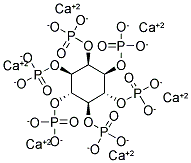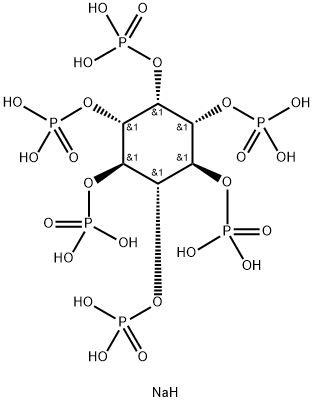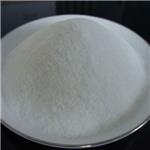Uses
A calcium salt form of phytic acid (P398700), the principal storage form of phosphorus in many plant tissues, especially bran and seeds. It has antioxidant effect as well as neuroprotective effect by chelating iron.
Agricultural Uses
Phytin is a major organic phosphorus compound in seeds
and is the source of phosphorus for new seedlings, till
they start absorbing it from the soil. The phosphorus
reserve in seeds is the calcium/magnesium salts of
inositol hexaphosphoric acid (phytic acid). It is used as a
fertilizer since it can advantageously be absorbed by
plants, and is found in the soil as a product of the
degradation of organic matter.
Inositol phosphate is thought to be of microbial origin
and can exist in several stereoisomeric forms; phosphate
esters of myo-, scyllo-, neo- and chrio-inositol have been
characterized in soil. Myo-inositol hexaphosphoric acid
(phytic acid), is usually a major pool of
organic phosphorus, which is fairly stable in an alkaline
medium but which gradually hydrolyzes (optimum pH
4.0) to a range of intermediate inositol phosphates, and
finally, to inositol in acidic media. Enzyme phylase also
hydrolyzes myo-inositol phosphates. Myo-inositol
phosphates account for between less than 1 and 62% of
the total soil phosphorus.





